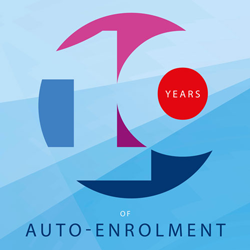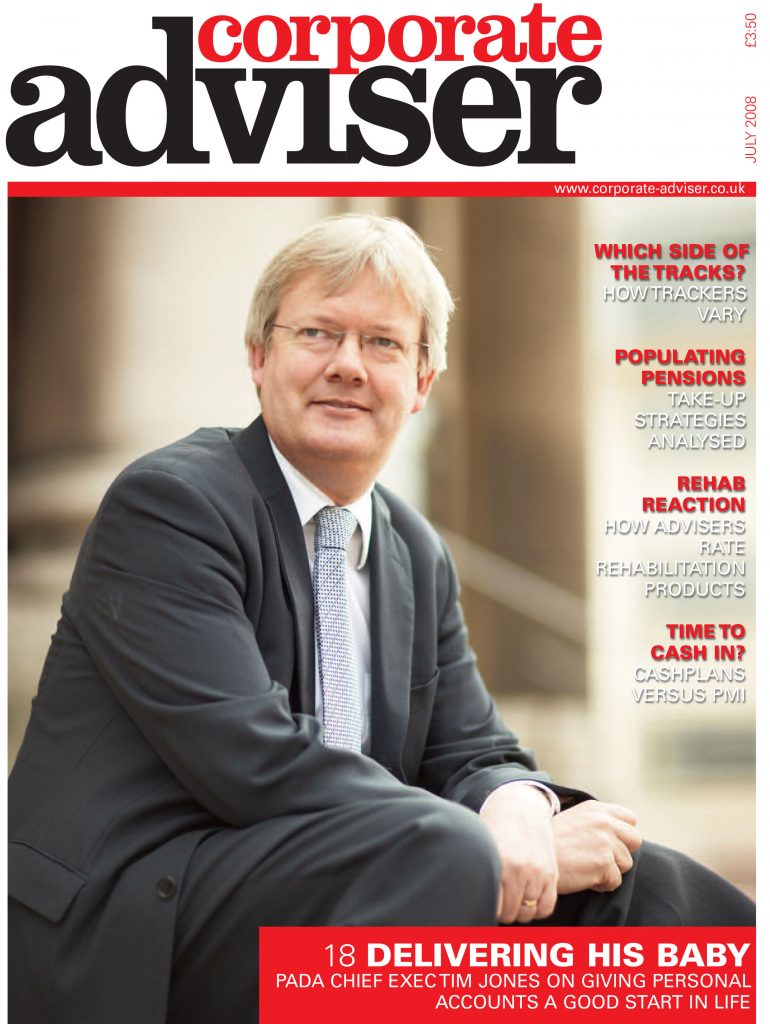PM Tony Blair invites Welfare Minister Frank Field to ‘think the unthinkable’ on welfare reform. One of his suggestions, before losing his job, is compulsory pension contributions
Auto-enrolment: a timeline
Introduction of stakeholder pensions – designed to boost pension savings among lower and middle-income earners. Legislation introduces a cap on charges, and requires all employers with more than 5 employees to offer access to a scheme. But employers do not have to contribute so take-up is muted.
State Second Pension replaces the State Earnings-Related Pension Scheme (Serps)
Pensions Commission launched by the Labour Government in response to growing concerns that people are not saving enough for their retirement. Its remit is to review current private and occupational provision and to advise on whether there is a case for moving beyond the current voluntary approach. Chaired by Lord Turner of Ecchinswell, with Jeannie Drake and John Hills as members.
First Pensions Commission report: ‘Pensions Challenges and Choices’
With an ageing population, the report lays out four options facing society:
i/ pensioners will become poorer relative to general population
ii/ taxes and/or NI must rise to pay for higher pensions
iii/ savings must rise
iv/ average retirement ages must rise
Second Pensions Commission report sets out two broad policy changes
i/ introduction of a low-cost nationwide pensions savings scheme to which individuals are automatically enrolled – but with the right to opt out.
ii/ employers to be compelled to match contributions at a ‘modest’ level, and legislation should ensure a low AMC.
The Commission also recommends changes to the state system to reduce means-testing, and increase basic payment, funded through higher tax spend and raising the state pension age.
Final Pensions Commission report – Makes four key recommendations it says enjoy a ‘high degree of consensus’
i/ State pension reform to deliver a simpler and more generous basic pension;
ii/ Introduction of AE to ‘strongly encourage’ individuals to save into a pension scheme;
iii/ A modest minimum level of matched employer contributions in AE schemes;
iv/ The state to play a role in setting up a National Pensions Savings Scheme, which can be used by smaller employers, and to deliver more cost effective solution. This eventually becomes Nest.
Pensions ‘A-Day’ – Reforms aim to simplify the pensions tax regime. Introduces both the annual allowance (AA) and lifetime allowance (LTA), both of which have been subject to numerous changes since, with accompanying protection schemes
Government White Paper – Introduces AE reforms, as recommended by the Pensions Commission.
Pension Minister John Hutton presents consultation paper on new ‘Personal Accounts’. Sets out a blueprint for low-cost national pensions scheme and auto-enrolment regime. The ‘Personal Accounts’ element eventually evolves into Nest.
Pensions Act 2007 – Implements the first part of the AE reforms. Also establishes the Personal Accounts Delivery Authority
(PADA), ultimately led by Tim Jones, helping the government to harness private sector expertise to launch AE and Nest.
Pensions Act 2008 – Introduces the legislative framework for AE, placing a duty on employers to automatically enrol relevant employees into a qualifying pension scheme, to which they also had to contribute. Proposes AE to launch in 2012 for the largest employers, and be phased in over a three-year period.
Pre-Budget report – Revised launch of AE. In light of the ongoing global crisis changes made to the timetable for implementing AE to ease the financial burden on employers. Will start, as planned, in Oct 2012, but will now run over a five year period, with the smallest employers having until April 2017 to comply, 15 years after the first Pensions Commission Report.
New companies not required to enrol staff until Feb 2018.
Employer contributions also to be phased: starting at 1% in 2012 and rising to 2% in 2016 and reaching the full 3% payment in 2017.
State pension age starts to increase for women, rising from 60 to 65. Initially this is to be phased in by April 2020, but under the Pensions Act 2011 this is brought forward to November 2018 .
National Employment Savings Trust (Nest) structure announced and trustee board announced.
Nest launched.
Largest UK companies (with 250 or more employees) start enrolling staff into AE schemes.
Occupational Pensions Scheme (Charges and Governance) Regulations introduces a charge cap of 0.75% on AE default schemes.
Introduced by then pensions minister Steve Webb, the charge applies to all schemes, investment and administration charges, excluding transaction costs.
Pension freedom rules — In his budget Chancellor George Osborne introduces wide-ranging reforms, allowing pension savers full access to their funds from the age of 55.
Smaller and micro employers start to be phased into the AE programme. Each employer gets a ‘staging date’ and six months to implement the programme.
The Pensions Regulator (TPR) bans ‘active member discounts’ on qualifying DC workplace pension schemes, outlawing higher charges on deferred members.
Review into AE — Recommendations include reducing the minimum age of AE from 22 to 18, and removing the lower limit of the ‘qualifying earnings band,’ so that contributions are paid from the first pound earned. The Government accepts these recommendations and says its ambition is to implement them ‘by the mid 2020s’
New rules requires all AE master trust providers to be authorised by TPR. Schemes have until March 2019 to apply for authorisation. This process hastens consolidation in this market, with the number of providers falling from 90 to 37.
All UK employers now automatically enrolling staff in an AE pension.
First increase to minimum AE contributions to 2% for employers and 3% for employees.
Second increase to minimum AE contributions to 3% for employers and 5% for employees.
Financial Conduct Authority introduces ‘investment pathways’ for contract-based AE schemes, requiring providers to offer ready-made investment options for those taking drawdown options without advice.
ABI and pensions industry call for increase in min AE contributions to 12% by 2031 — split between employer and employee to ensure adequate standard of living in retirement.



